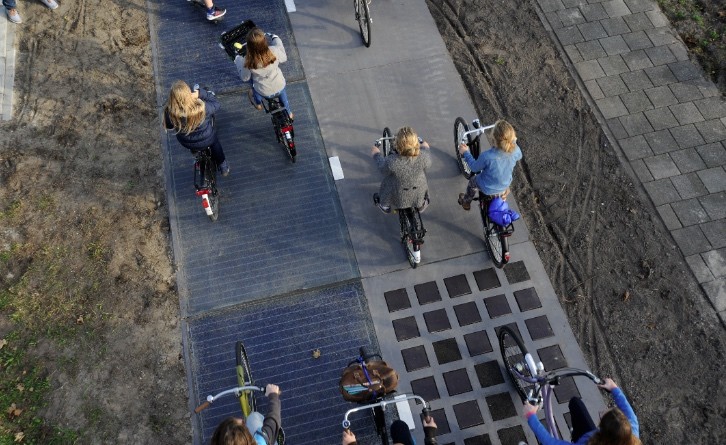In 2013, the average annual electricity consumption for a U.S. residential utility customer was 10,908 kWh, the U.S. Energy Information Administration claims. What if we could get two-thirds of that out of the actual roads we travel on every day without spilling one drop of carbon emission in the air?
If we were to trust the Dutch engineers’ findings, it is possible. How? One way would be using SolaRoad infrastructure instead of the average bitumen highways. In case you haven’t heard of it, we’ll take the time to introduce it to you.
SolaRoad represents what the name stands for. The solar panels are sandwiched between glass, silicon rubber, and concrete and are strong enough to support 12-tonne fire trucks without any damage. Each panel connects to smart meters, which optimize their output and feed electricity straight into street lighting, or the grid.
An experimental, 100-meter bike path opened in November last year, in the city of Krommenie, 25 kilometers (15 miles) outside Amsterdam. After six months of operating, the panels beneath the road have generated over 3,000kW, an unexpected result that got the Dutch engineers even more excited about the project.
“If we translate this to an annual yield, we expect more than the 70kWh per square meter (10 sq ft) per 12 months time. We predicted [this] as an upper limit in the laboratory stage. We can, therefore, conclude that it was a successful first half year,” said Sten de Wit, spokesman for SolarRoad, according to AlJazeera.
Nevertheless, the technology has proven to be quite promising, as more than 150,000 cyclists have ridden over the panels so far without any problems. In fact, according to the source, the group behind the project is already talking with local councils in the Netherlands to install similar paths. A cooperation agreement has also been signed with the state of California.
SolaRoad represents what the name stands for. The solar panels are sandwiched between glass, silicon rubber, and concrete and are strong enough to support 12-tonne fire trucks without any damage. Each panel connects to smart meters, which optimize their output and feed electricity straight into street lighting, or the grid.
An experimental, 100-meter bike path opened in November last year, in the city of Krommenie, 25 kilometers (15 miles) outside Amsterdam. After six months of operating, the panels beneath the road have generated over 3,000kW, an unexpected result that got the Dutch engineers even more excited about the project.
“If we translate this to an annual yield, we expect more than the 70kWh per square meter (10 sq ft) per 12 months time. We predicted [this] as an upper limit in the laboratory stage. We can, therefore, conclude that it was a successful first half year,” said Sten de Wit, spokesman for SolarRoad, according to AlJazeera.
It will soon hit California too
It took the research group five years to develop the technology and so far they have not encountered any big setbacks. However, at some point, a small section of a coating, designed to give grip to the smooth glass surface without blocking the sun, delaminated. Apparently, it was the result of temperature fluctuations causing the surface to shrink. The team is now working on an improved version of the coating.Nevertheless, the technology has proven to be quite promising, as more than 150,000 cyclists have ridden over the panels so far without any problems. In fact, according to the source, the group behind the project is already talking with local councils in the Netherlands to install similar paths. A cooperation agreement has also been signed with the state of California.
